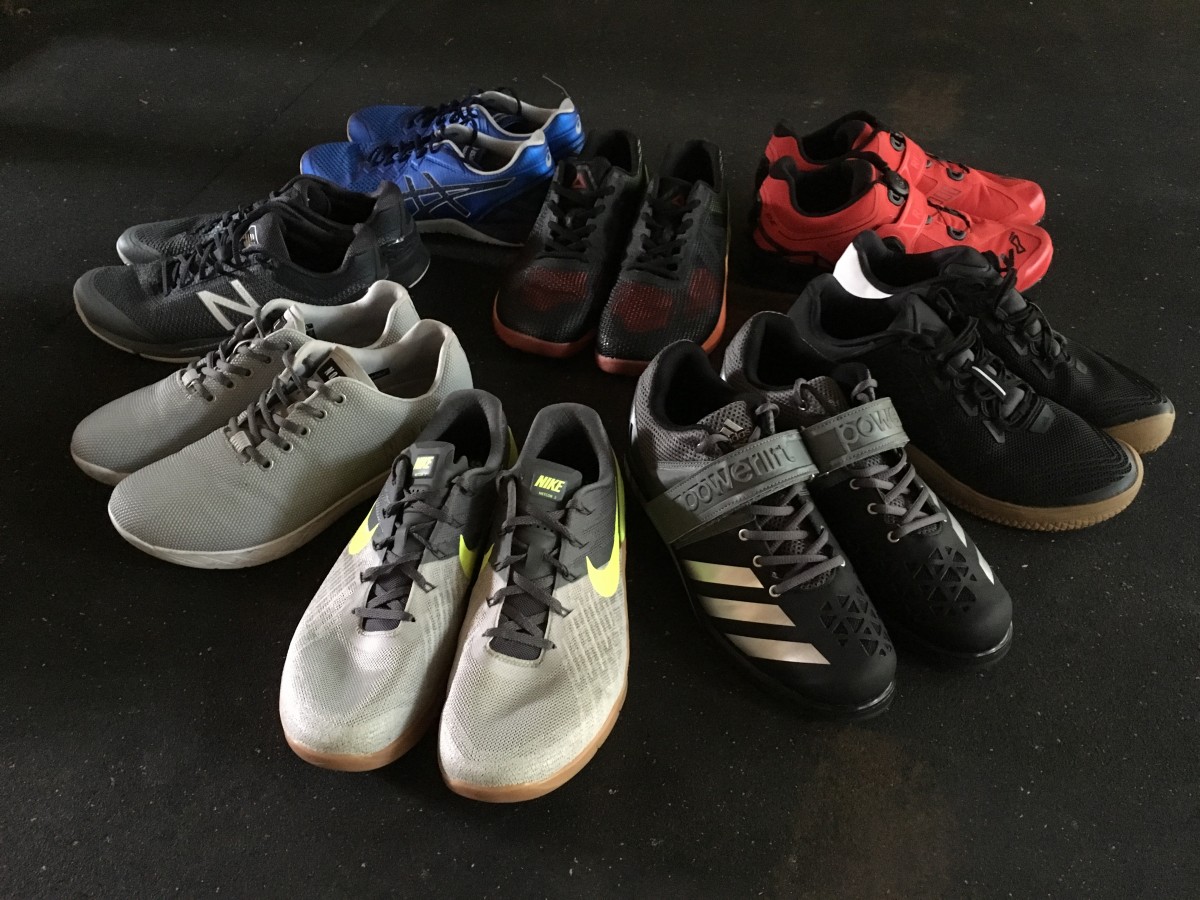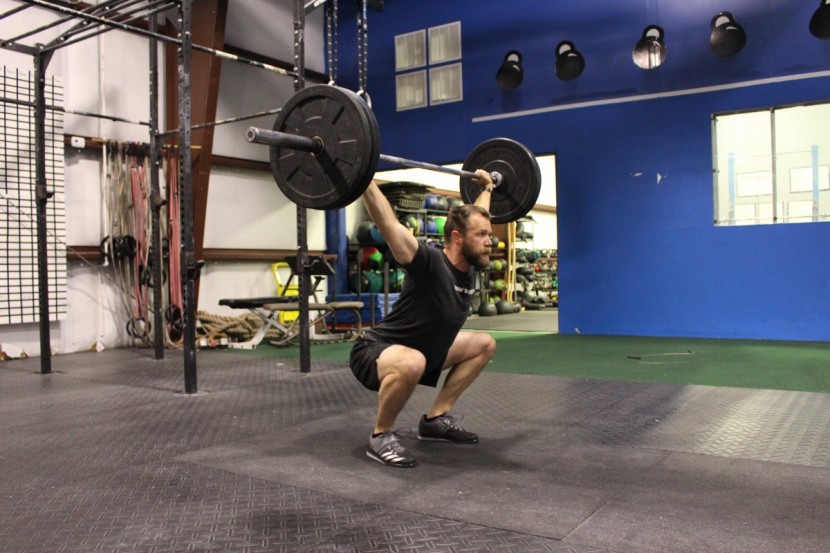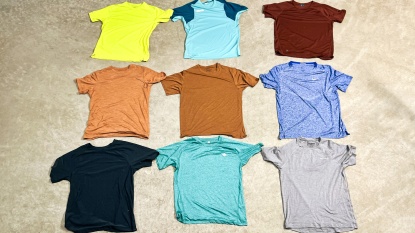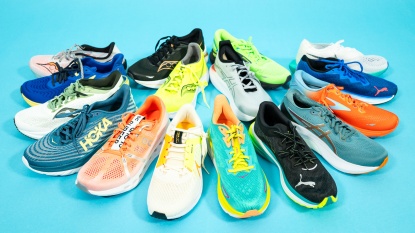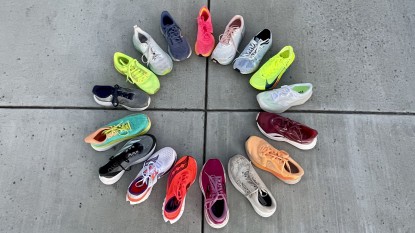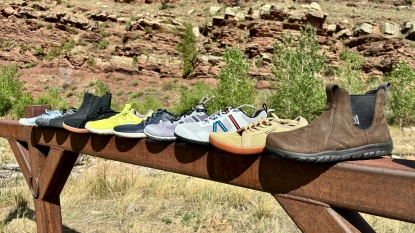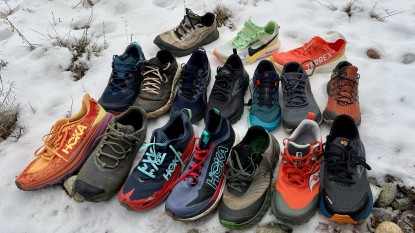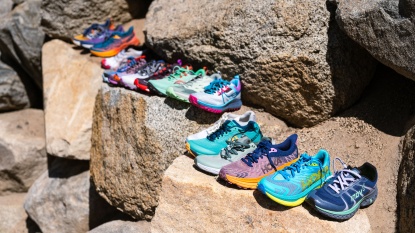There are so many shoes for CrossFit on the market that choosing one balanced pair is a real challenge. Addressing three questions will help. First, think about what aspect of CrossFit challenges you most or what comes up most frequently in your gym's workouts. Second, consider whether you plan to compete in CrossFit as your sport or if you are using CrossFit training to increase health and fitness. Finally, consider whether you want this to be your only pair of shoes for CrossFit, or are you buying this pair to fill a niche for training or competition? Then, use the test results and reviews present here to help you narrow down your choices to a few models that suit your specific needs.
Types of Shoes for CrossFit
Like the athletes, CrossFit shoes must strive to be good at a variety of activities. They need stability for weightlifting, cushioning for running, breathability to deal with intense output, but must provide protection. The particular balance of any successful shoe is a lesson in managing trade-offs. In addition to running shoes, CrossFit athletes have tried everything from traditional weightlifting shoe to nearly barefoot minimalist options. Fortunately, shoe manufacturers are paying attention to the needs of CrossFit and creating more balanced shoes. They are moving towards the ideal from all directions, so we still end up with three major types of CrossFit shoes: running shoes with added support, lifting shoes with added cushion, and minimalist shoes with added protection. Which type you choose depends on your preference and the amount of emphasis placed on lifting, running, or gymnastics at your gym.
CrossFit requires participants to balance performance across a broad range of physical activities. As such, excellent shoes for CrossFit must be able to balance the conflicting needs of stability when moving heavy weights with the flexibility to absorb shock from running and jumping. It must balance support versus comfort and breathability during long workouts. It should have the sensitivity to allow a feel for the ground, platform, or box one is standing on, but also provide protection from the various impacts and abrasions possible in intense workouts.
Weightlifting, Gymnastics, or Running
Where do you want the most benefit? CrossFit combines the disciplines of weightlifting, gymnastics, and running. A shoe can easily provide performance features in any one discipline by sacrificing the others, but finding a more equal balance between all three is difficult. It requires managing trade-offs. Is there one movement or discipline that gives you fits? Is one thing holding you back from a breakthrough in competition? If so, pick shoes for CrossFit that will help you work on that area more comfortably. If you're comfortable, you'll be willing to spend more time working on your weakness, and improve faster. We all have a tendency to want to play to our strengths, but the power of CrossFit is in finding and correcting weaknesses. Choose a shoe that will help you build up an area of weakness.
Competition or Training?
Are you seeking to compete in CrossFit as your sport? If so, you'll want to shore up weaknesses as fast as possible. That means spending time correcting weaknesses with laser focus. A shoe that provides performance features in your area of improvement can make the transition more pleasant. Athletes with flexibility limitations in the squat can benefit greatly from an elevated heel. Competitive athletes may want to have a few pairs of shoes ready on competition days to handle specialized events.
One Pair, or More?
Knowing whether this will be your only pair of shoes for CrossFit or not lets you figure out whether you need to seek balance among our testing metrics, or whether one will be much more important. For a couple years, I did CrossFit in a pair of 5k racing flats. Eventually, I was strong enough that the running shoes weren't adequate for heavy barbell workouts, so my next purchase was a pair of weightlifting shoes. If you're facing a similar situation, I recommend the Adidas Powerlift 3. The Powerlift 3 is excellent for heavy barbell work, and balanced enough to handle everything but the longer runs. It's also less expensive than any other shoe we tested.
Someone from a weightlifting or power lifting background might want a shoe that handles lighter weights and running. For these folks, we recommend the New Balance Minimus 40. The Minimus was fine for cycling lighter barbells, and score highest on the running metric. Someone coming to CrossFit from a period of inactivity may not have a good pair of athletic shoes. Anyone attempting to eliminate clutter may want to buy one balanced shoe for CrossFit. For these folks, I recommend the Nike Metcon 3. It provides balanced performance features across weightlifting, running, and gymnastics.

